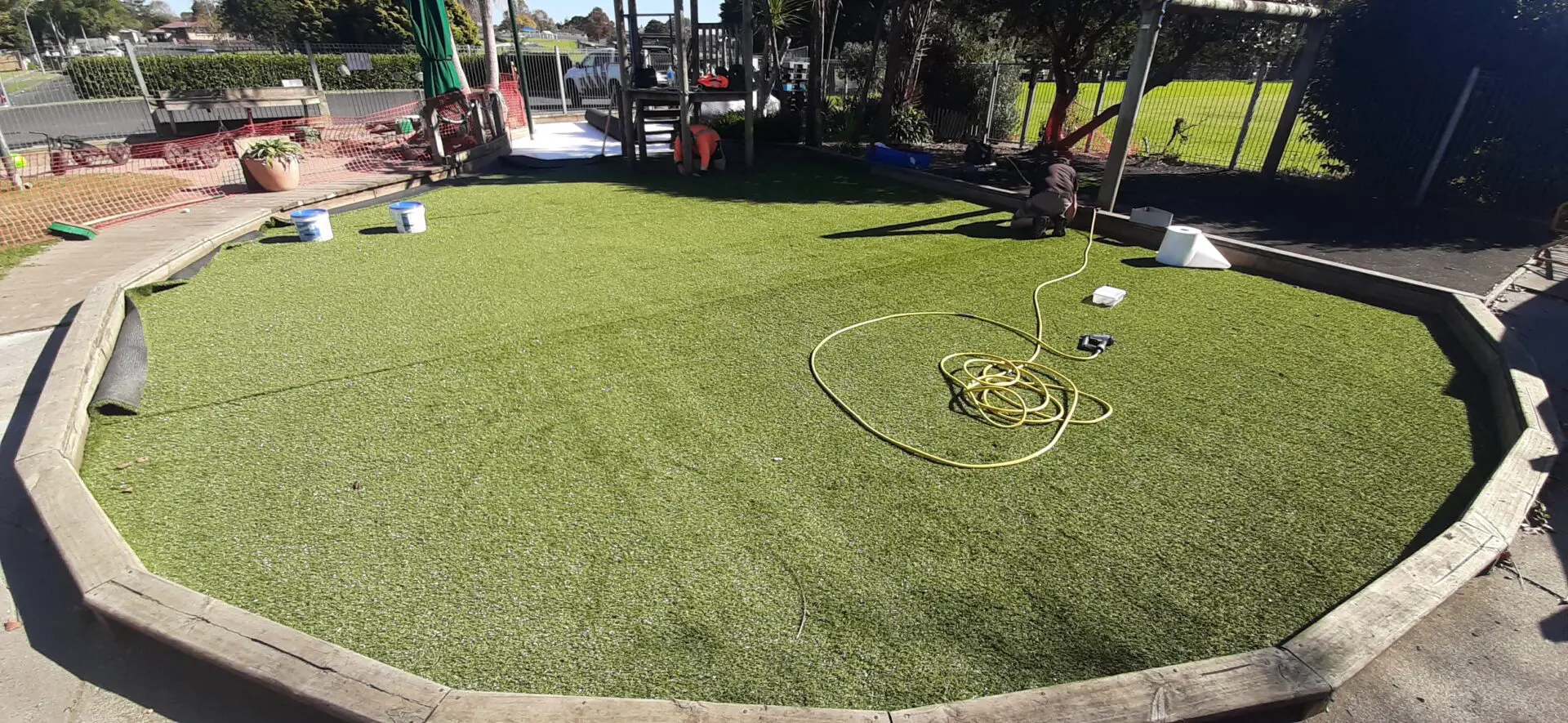
Artificial grass might be famously low-maintenance, but that doesn’t mean it’s no-maintenance. Whether you’ve installed synthetic turf at a school, sports facility, or home, proper care goes a long way in preserving its appearance, playability, and safety — especially in New Zealand’s ever-changing climate.
At TigerTurf NZ, we’ve been installing and maintaining artificial turf for decades, and we’ve seen the difference a little attention can make. In this guide, we’ll walk you through the best practices for caring for your synthetic grass, from everyday upkeep to seasonal tasks and long-term protection strategies.
Unlike natural grass, artificial turf doesn’t need mowing, watering, or fertilising — which saves you time and money. But it still deals with the elements, foot traffic, and debris.
Neglecting your turf can lead to:
Regular upkeep keeps your turf looking fresh, feeling comfortable underfoot, and performing as designed — especially in sporting environments where safety and traction matter most.
Clear leaves, twigs, litter, and other organic material. Left unattended, this debris can decompose and encourage moss, mould, or unwanted odours.
Foot traffic can cause the grass blades to flatten. Brushing against the grain lifts the fibres and restores the natural upright look.
Infill materials (such as sand or rubber granules) help with drainage, cushioning, and keeping fibres upright. Over time, infill may shift.
Over time, seams and edges may lift — particularly in areas with heavy usage or drainage issues.
After rain, make sure water isn’t pooling. Puddles may indicate infill compaction or underlying base issues.
New Zealand’s damp conditions can encourage moss and weed growth, especially in shaded or low-traffic zones.
For schools or sports facilities, consider scheduling a professional deep clean once or twice a year.
At TigerTurf NZ, we offer ongoing artificial grass maintenance services designed to keep your turf in excellent condition for years to come.
Artificial grass is built to be durable — but accidents happen. Here’s how to clean common issues:
Important: Always test cleaners on a small area first and avoid harsh solvents.
Not all synthetic grass is the same — schools, sports fields, and landscaping areas each have unique usage patterns. At TigerTurf NZ, we design our products to suit the demands of their environment:
Understanding the specific needs of your turf type is essential to keeping it in great condition.
Artificial turf offers a fantastic combination of aesthetics, durability, and low upkeep — but like anything exposed to the outdoors, it performs best with regular care. From weekly brushing to seasonal checks, a little maintenance goes a long way toward keeping your synthetic grass looking lush, safe, and ready for use.
Whether it’s a backyard play area, a school courtyard, or a professional sports facility, TigerTurf NZ





